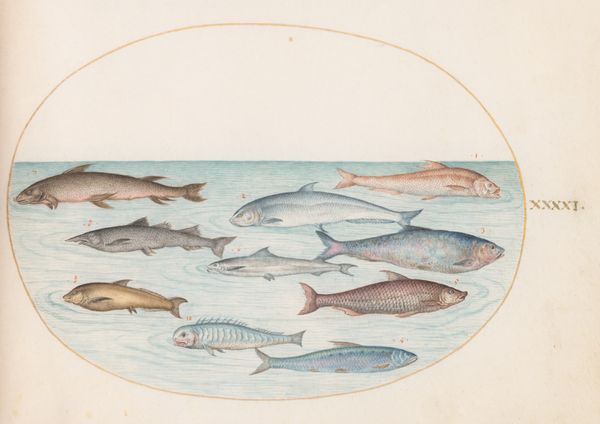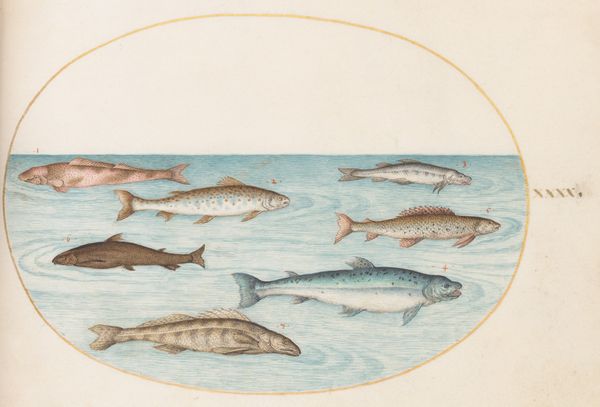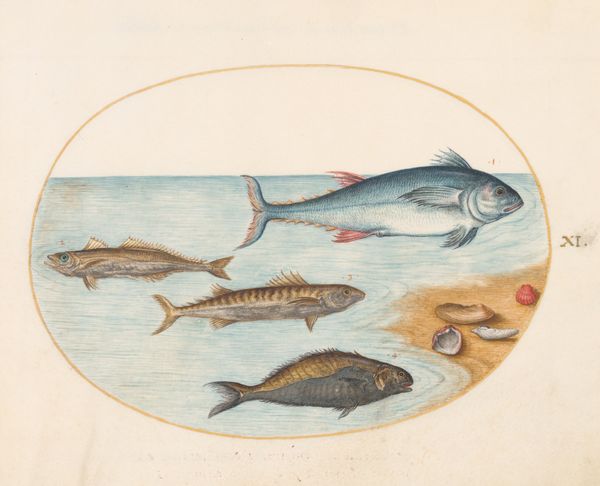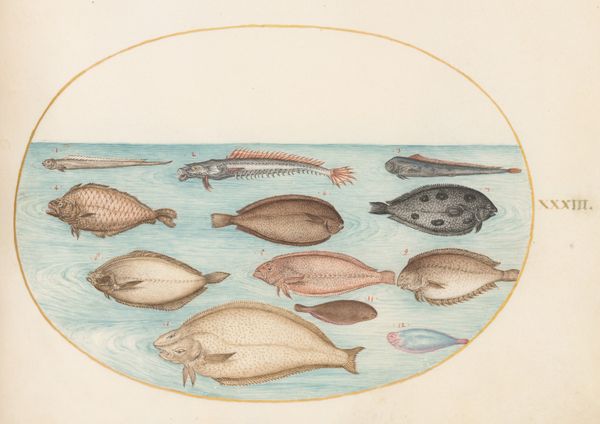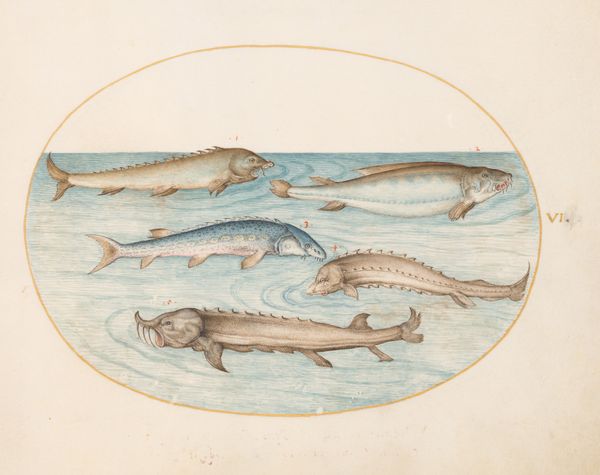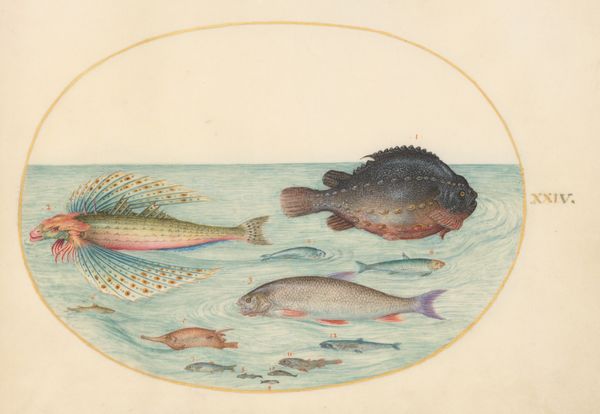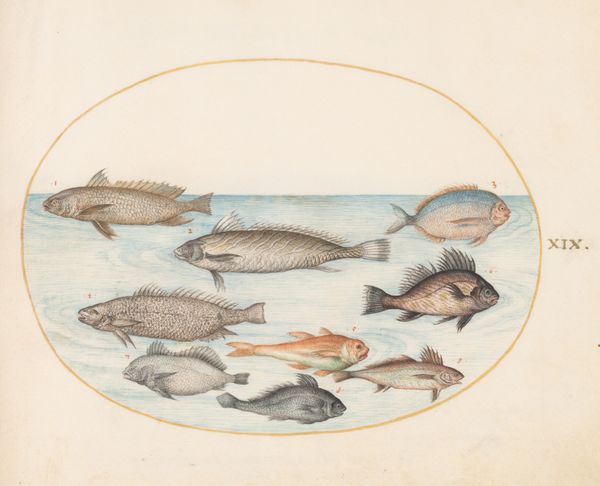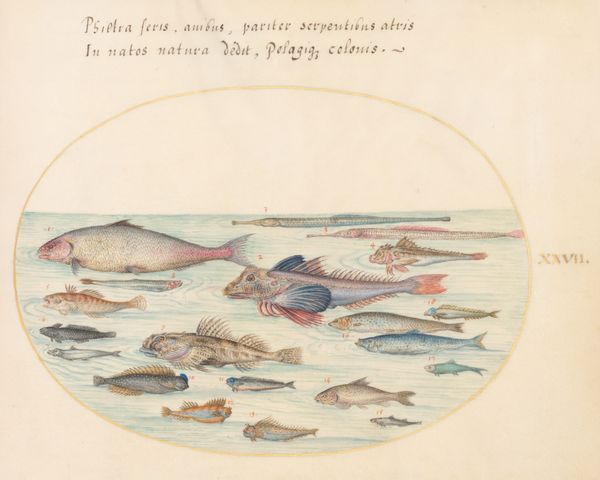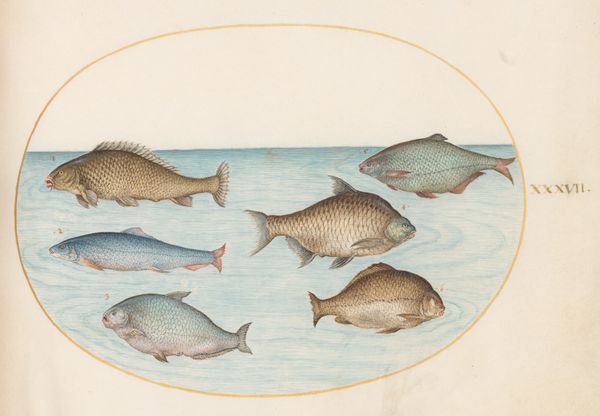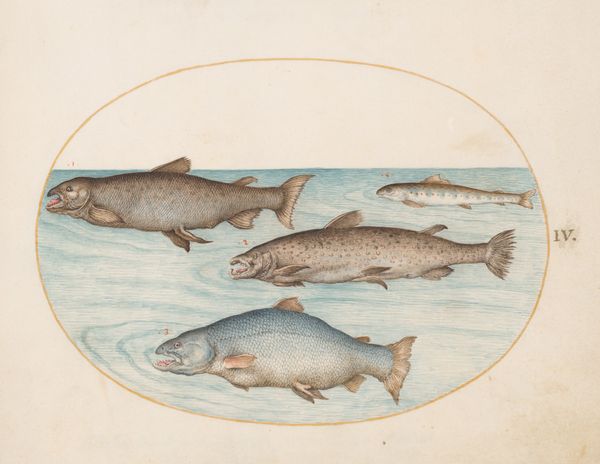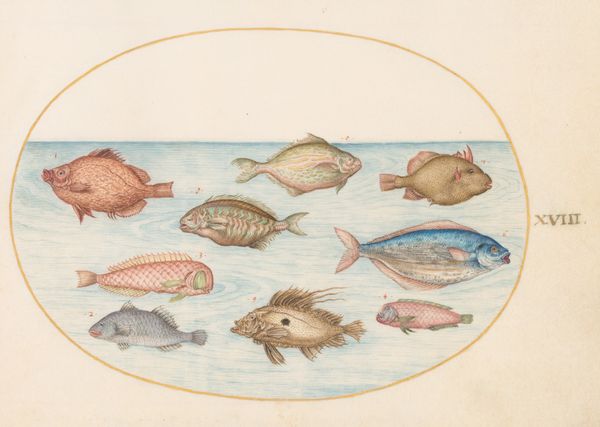
drawing, watercolor
#
drawing
#
11_renaissance
#
watercolor
#
coloured pencil
#
watercolour illustration
Dimensions: page size (approximate): 14.3 x 18.4 cm (5 5/8 x 7 1/4 in.)
Copyright: National Gallery of Art: CC0 1.0
Curator: Here we have "Plate 36: Five Fish, Including Carp(?)" created around 1575-1580 by Joris Hoefnagel. It’s a watercolor drawing, quite exquisite. What strikes you about it initially? Editor: The peculiar way these fish are displayed; it is both aesthetically pleasing and unsettling, giving them individual space. There's almost a scientific objectification, yet with these vibrant colours. They seem vulnerable, almost trapped, and that juxtaposition is interesting. Curator: Indeed. These were created within a burgeoning scientific and natural historical culture, influenced by cabinets of curiosities, which presented collections that reinforced power structures and narratives around global exploration and the appropriation of nature. These fish were, essentially, specimens. Editor: And the act of depicting these fish becomes an act of claiming power and control over them, especially when considering how trade and access to natural resources underpinned that historical period. It's an act of visual colonialism of the aquatic world, neatly framed, categorized and understood through a European lens. The gold frame seems a little pompous, highlighting this assertion, like a precious find. Curator: The meticulous rendering of each fish, the individual character they seem to possess... Hoefnagel certainly blended art and observation. The style leans toward an almost documentary accuracy while retaining an inherent artistic flair. The arrangement avoids hierarchies too; are these all ‘important fish’? Where do they sit within a society dependent upon nature? Editor: Exactly! These were crucial questions during a time when understanding and documenting nature was interwoven with expanding economic and political dominance. What fish did your average European see? What role would these drawings have had in wider scientific study? By immortalizing these "specimens", Hoefnagel is engaging in a practice that also immortalized certain socioeconomic practices too. Curator: A fitting reflection to tie us in our contemporary concern around ecological balance and ethics surrounding wildlife depiction. Editor: It allows us to confront the legacies and lingering power structures influencing our comprehension of the natural world now.
Comments
No comments
Be the first to comment and join the conversation on the ultimate creative platform.

